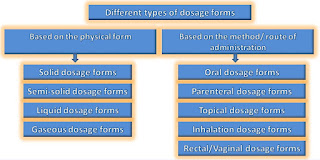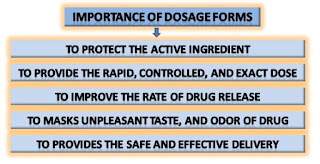The pharmaceutical emulsion is a biphasic liquid dosage form that has several advantages and some disadvantages, let’s check them.
The dosage forms are pharmaceutical products that are specifically a mixture of active ingredients and excipients and are formulated by a different process in a particular configuration such as solid, liquid, semi-solid, and gaseous dosage forms. The different types of dosage forms depend on the physical form of the drug and route of drug delivery/administration.
The liquid dosage forms such as syrups, emulsion, suspensions, linctus, elixirs, drops, and gargles, etc. are one of the most commonly used dosage forms since it is more suitable for to swallow as compared with solid oral dosage.
The pharmaceutical emulsion is a thermodynamically unstable system containing a minimum of two immiscible liquid phases one among which is dispersed as globules within the other liquid phase stabilized by a third material called an emulsifying agent. Emulsions or creams are a commonly prescribed product and are used in the form of lotions, creams, and liniments, etc.
Advantages of emulsion dosage form:
- The major advantage of the emulsion dosage form is that it is used to deliver drugs that are poorly soluble in water, but easily soluble in oil.
- Another major advantage of the emulsion is that it is possible to include two incompatible ingredients/ drugs in a dose, one in each phase of the emulsion.
- The solubility of drugs can provide more bioavailability due to which emulsion can provide increased bioavailability of those drugs that have low aqueous solubility.
- The pharmaceutical emulsions can be used to mask the unpleasant taste and odor of the active pharmaceutical ingredients by dissolving the API in the internal phase of an o/w emulsion, the external phase contains the suitable sweetening and flavoring agents.
- It can be formulated as sustained-release medication and can be prepared with commonly used excipients.
- Drugs that are more stable in the oily phase compared to the aqueous phase may show better stability in the emulsion dosage form.
- The oral solid oral dosage forms such as a tablet, capsules, powders, granules, and caplets need to swallow that is difficult especially for child and elderly patients. Emulsions can be used to administer drugs to patients who have difficulty swallowing solid dosage forms.
- It has a simple and self-administration of the medication and does not produce any kind of pain like the parenteral route (Injection).
Disadvantages of emulsion dosage form:
- The major disadvantage of the emulsion dosage form is that the emulsions are thermodynamically unstable and hence can prepare to stabilize from the separation of the two phases, which means that it is difficult to formulate.
- A uniform and precise dose of the drug cannot be obtained; it needs to be measured at each time of dose.
- Emulsion medications are heavy, prone to container breakage, and difficult to transport.
- The storage conditions of the emulsion can affect stability therefore it requires special storage conditions.
- If the preparation is not shaken well before use, the dose may vary each time.
- It is liable for microbial contamination that can lead to cracking.
- It needs a special manufacturing process, instruments, and trained person resulting in the emulsion is a more costly product than other dosage forms.
Commonly asked questions on dosage forms are as follows.
What are the types of emulsions?
The emulsions are classified into the following types.
1. Simple emulsion-A: oil in water (O/W), B: water in oil (W/O) emulsion
2. Multiple emulsions- A: water-in-oil-in-water (W/O/W), B: oil-in-water-in-oil (O/W/O) Emulsion
3. Microemulsions- A: oil-in-water microemulsions, B: water-in-oil microemulsions
What is the importance of dosage forms?
Dosage forms are important to protect the active ingredient, to improve the rate of drug release, to provide safe and effective delivery, and to perform the optimal action of the drug.
What is the difference between emulsion and suspension?
The major difference between emulsion and suspension is that the emulsion is a heterogeneous mixture of two immiscible liquids, whereas suspension is a heterogeneous mixture, in which the dispersed particles are large and settle upon standing.

